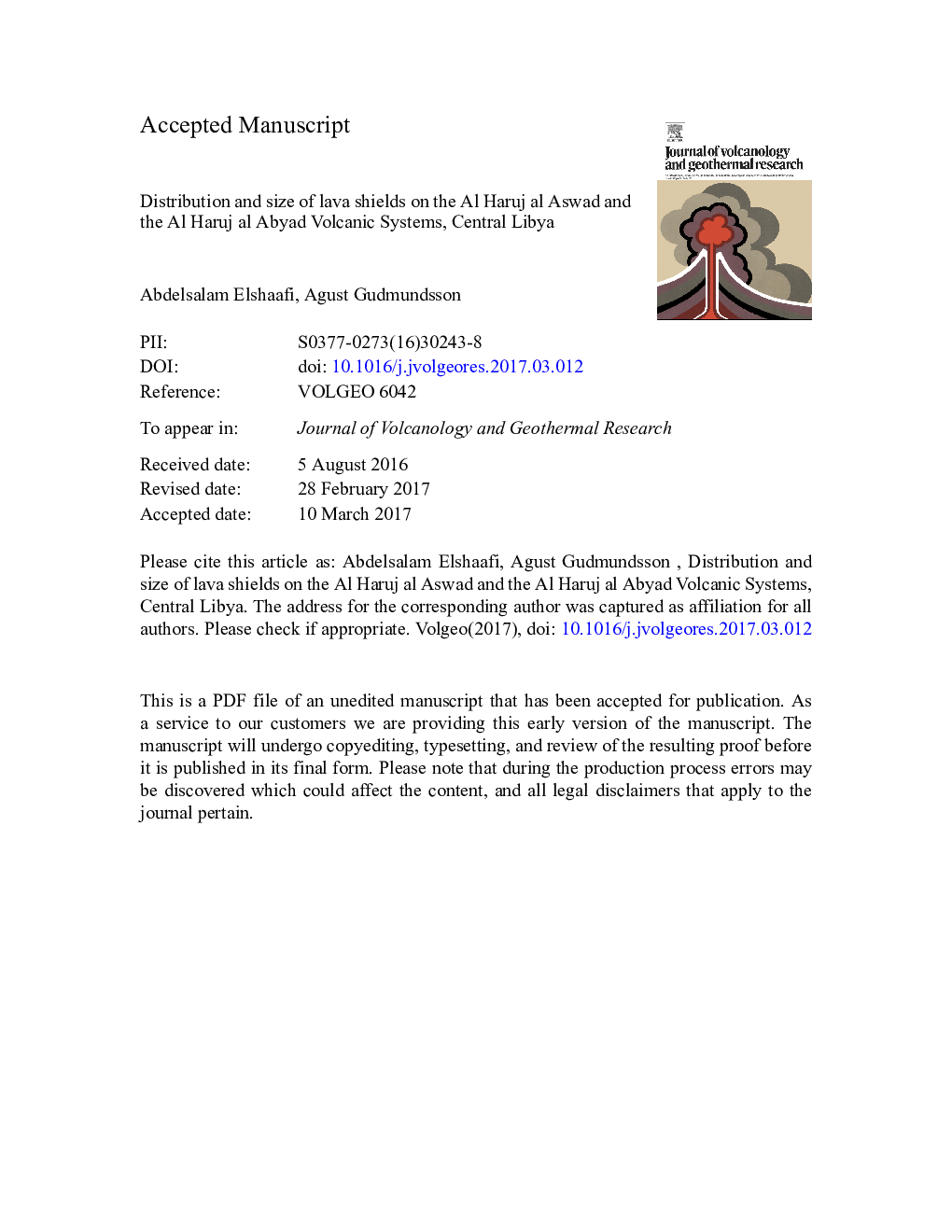| Article ID | Journal | Published Year | Pages | File Type |
|---|---|---|---|---|
| 5783748 | Journal of Volcanology and Geothermal Research | 2017 | 59 Pages |
Abstract
The Al Haruj Volcanic Province (AHVP) consists of two distinct volcanic systems. In the north is the system of Al Haruj al Aswad, covering an area of 34,200Â km2, while in the south the system of Al Haruj al Abyad, covering an area of 7,850Â km2. The systems have produced some 432 monogenetic volcanoes, primarily scoria (cinder) cones, lava shields, and maars. The density distribution of the volcanoes in each system, plotted as eruption points or sites, has a roughly elliptical surface expression, suggesting similar plan-view geometry of the magma sources, here suggested as deep-seated reservoirs. More specifically, the Al Haruj al Aswad magma reservoir has major and minor axes of 210Â km and 119Â km, respectively, and an area of 19,176Â km2, the corresponding figures for the Haruj al Abyad reservoir being 108Â km and 74Â km, for the axes, and 6209Â km2 for the area. We measured 55 lava shields on the AHVP. They are mostly restricted to the northern and southern parts of AHVP and date from late Miocene to (at least) the end of Pleistocene, while some may have been active into Holocene. In fact, although primarily monogenetic, some of the lava shields show evidence of (possibly Holocene) fissure eruptions in the summit parts. The early lava shields tend to be located at the edges of volcanic systems and with greater volumes than later (more central) shields. The average lava shield basal diameter is 4.5Â km and height 63Â m. There is strong linear correlation between lava shield volume and basal area, the coefficient of determination (R2) being about 0.75. When 22 Holocene Icelandic lava shields are added to the dataset, for comparison, the correlation between volume and basal area becomes R2Â =Â 0.95. Numerical models suggest that the local stress fields favoured rupture and dyke injection at the margins of the source reservoirs during late Miocene - early Pliocene, in agreement with the distribution of the early, large-volume shields.
Keywords
Related Topics
Physical Sciences and Engineering
Earth and Planetary Sciences
Geochemistry and Petrology
Authors
Abdelsalam Elshaafi, Agust Gudmundsson,
